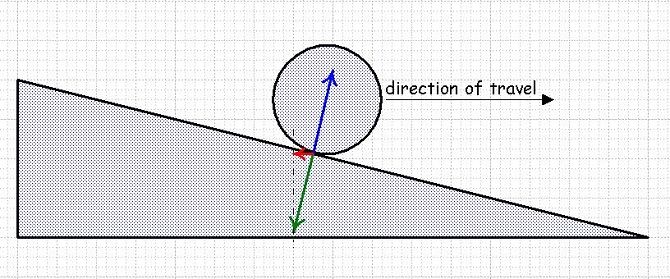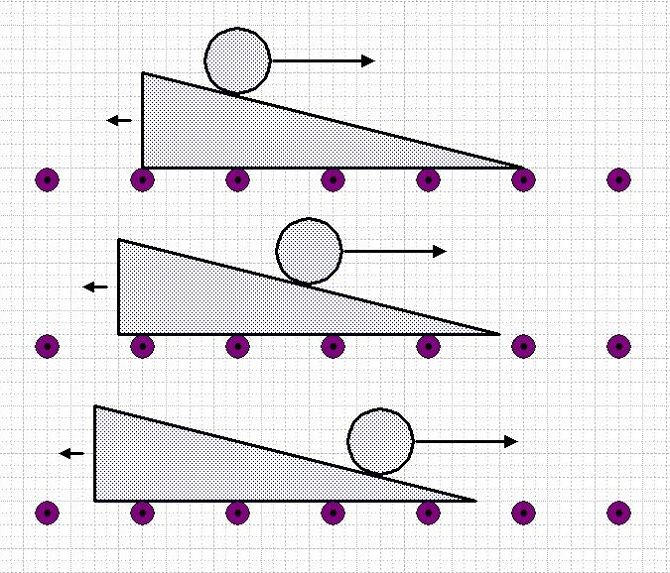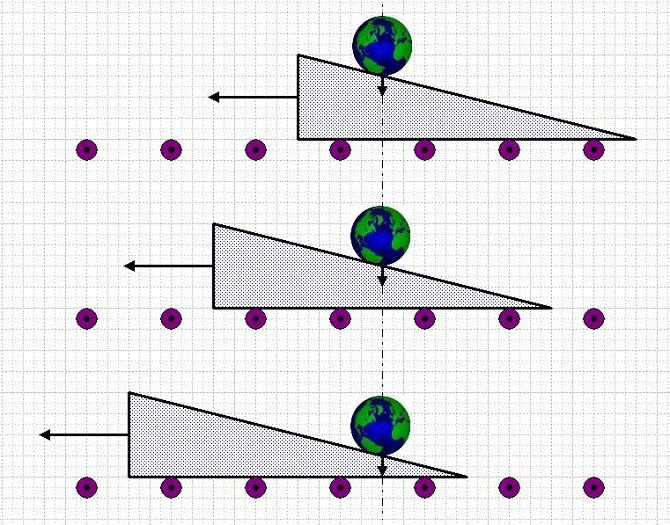Another example of an asymmetric force moving the earth is the very familiar case of a body rolling or sliding down a slope.

The diagram above shows the normal and reaction forces of a body on a frictionless slope. The red arrow shows the horizontal force acting on the slope. This horizontal force pushes the slope to the left.

The effect of this push can be seen by mounting the slope on rollers as above. The relative accelerations of the body and the slope will be in inverse ratio to their masses.
In this case the mass of the slope is substantially greater than the mass of the body so the acceleration of the body will be substantially greater than the acceleration of the slope.
Consequently, the movement of the body to the right will be greater than the movement of the slope to the left as shown in the three diagrams.

Next consider the boundary case where the mass of the body is vastly greater than the mass of the slope. In this instance the mass will fall almost vertically (but not quite) and spit the slope out to the left.
(Which reminds me of the time during the war when we were given prunes and custard for school dinner's pudding. We used to squeeze the slippery prune stones between our fingers and fire them down the hall.)
The opposite boundary case is where we remove the rollers and attach the slope to the earth. Now the slope and earth will accelerate to the left. The acceleration will be well below the threshold of perception but it will not be zero.




